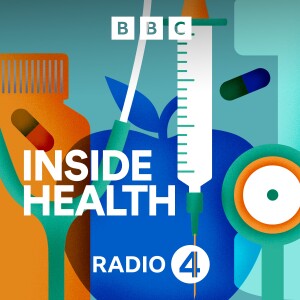
Cancer drugs fund, Winter flu vaccine, Bandy legs and knock knees, Peer review
 2015-09-22
2015-09-22
Download
Right click and do "save link as"
For five years the Cancer Drugs Fund has supplied seventy five thousand patients in England with cancer drugs, but its days are numbered. Spiralling costs have led to a reduction in the number of drugs the CDF will pay for, meaning newly-diagnosed patients may miss out. Dr Mark Porter talks to Vicky Rockingham about the anxiety that reform of the CDF is causing. Vicky is a mother of two, working full time, and receiving regorafenib paid for by the CDF for her rare type of gastrointestinal stromal tumour, or GIST. She tells Mark that the drugs from the CDF are giving her extra time with her family and enabling her to carry on working. And Jonathan Pearce, Chair of Cancer 52, an alliance of organisations that represent people with less common and rarer cancers like Vicky's, tells Mark why any new-model CDF must take into account individual patient needs. Regular Inside Health contributor, Dr Margaret McCartney, describes how patients access cancer drugs in Scotland, Wales and Northern Ireland and discusses with Mark the difficult decisions that access to expensive and innovative new cancer medicines present for the NHS.
Last season's winter flu vaccine provided only limited protection to those who received it. An exceptional year where there was a mismatch between the flu virus that eventually circulated, and the vaccine that had been developed by international teams. The result was just 30% protection (down from its usual 70-80%). Dr Mark Porter asks the chair of the Joint Committee on Vaccination and Immunisation (JCVI), Professor Andrew Pollard, whether confidence in this year's vaccine could be dented.
Babies, toddlers and pre-school children often seem to have bow legs and knock-knees and parents frequently turn up at their doctor's surgery asking for reassurance about the way their children walk. Manoj Ramachandran, consultant children's orthopaedic and trauma surgeon based at The Royal London and Bart's Hospital tells Mark that up to a quarter of the children referred to his clinics have normal, developmental lower limb variants. Children are naturally bow legged when they first walk and by the age of three, there's another natural re-alignment which tends to lead to knock knees. At both these ages his clinic receives a peak in referrals but by the age of seven, he says, most childrens' legs straighten up naturally.
Inside Language: Carl Heneghan, Professor of Evidence Based Medicine at the University of Oxford and Dr Margaret McCartney continue to demystify the scientific language of medicine. This week, peer review.
Producer: Fiona Hill.
view more
More Episodes
012345678910111213141516171819
Create your
podcast in
minutes
- Full-featured podcast site
- Unlimited storage and bandwidth
- Comprehensive podcast stats
- Distribute to Apple Podcasts, Spotify, and more
- Make money with your podcast
It is Free
- Privacy Policy
- Cookie Policy
- Terms of Use
- Consent Preferences
- Copyright © 2015-2024 Podbean.com




